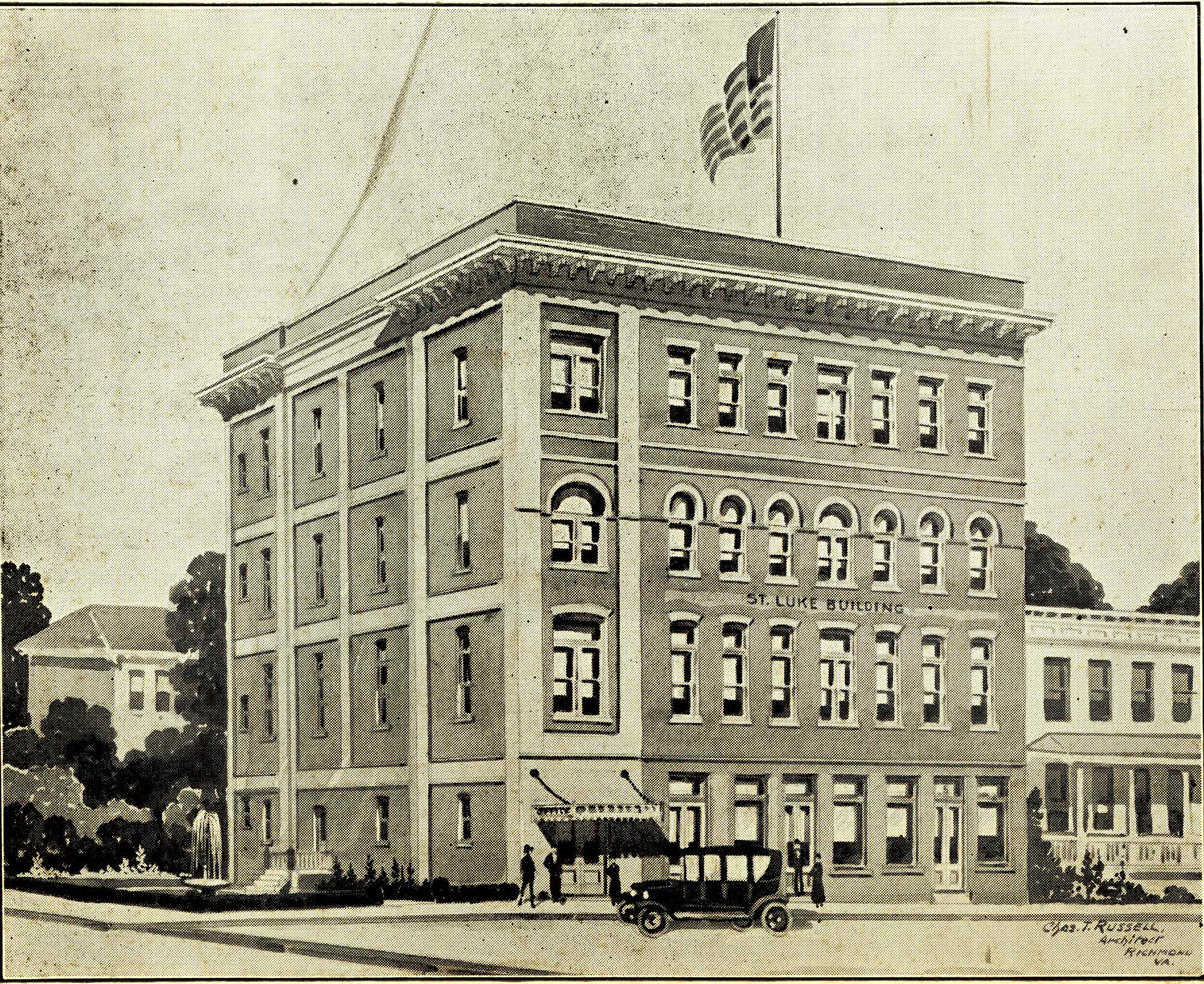Mutual Benefit
Maggie Lena Walker and IOSL Department Heads
Pin with portrait of Independent Order of St. Luke founder Mary Prout
The Independent Order of St. Luke was founded in Baltimore, Maryland, in 1867 by Mary Prout (1801–1884), a formerly enslaved woman and member of Bethel AME Church. Like other fraternal and mutual aid associations, the IOSL provided insurance and burial benefits for its members. Originally a women’s mutual aid society, it soon expanded to include men and opened additional chapters, relocating to Richmond, Virginia, in the process. After Maggie Lena Walker took charge in 1899, the organization grew dramatically.
Let us put our moneys together … and reap the benefit ourselves.
Maggie Lena Walker
Expanding the Order
Under Maggie Lena Walker’s leadership, the Independent Order of St. Luke broadened its mission to promote Black economic development through business ventures. At its peak in the mid-1920s, the IOSL had over 100,000 members in more than 20 states and an insurance fund of $8 million.
Maggie Lena Walker
Commemorative Bust of Maggie L. Walker, 1934
A young Maggie Lena Walker, ca. 1885–1890, Richmond Photo Co.
Maggie L. Walker, ca. 1900–1910, Williamsburg Photo Co., Brooklyn, New York
A pioneering and charismatic figure who led the Independent Order of St. Luke to national prominence, Maggie Lena Walker (1864–1934) first joined the organization at age 14. She rose through the ranks, becoming a lodge president and then a national deputy. In 1895 she founded the IOSL Juvenile Department, which established new leadership roles for women members. In 1899, Walker succeeded William M. T. Forrester as Right Worthy Grand Secretary, a position she held until her death.
Maggie L. Walker with neighborhood children in Richmond, Virginia, ca. 1917
Economic Development
Interior of St. Luke Penny Savings Bank, ca. 1917
Employees at the entrance to St. Luke Bank, 1903–1929
As the Right Worthy Grand Secretary-Treasurer of the IOSL, Maggie Walker promoted a vision of African American economic empowerment. In her native city of Richmond, Virginia, she invested the IOSL’s resources to launch several business ventures, including The St. Luke Herald, a weekly newspaper; the St. Luke Emporium, a department store; and the St. Luke Penny Savings Bank. These institutions, along with the IOSL administrative offices, provided services and white-collar jobs for African American men and women.
In 1903 Maggie Walker established the St. Luke Penny Savings Bank in Richmond. By the mid-1920s the bank had deposits of over $500,000 and had helped over 600 Black families to purchase homes.
The St. Luke Herald
Front page of The St. Luke Herald, December 20, 1922
The IOSL newspaper, published weekly from 1902 to 1931, reported on organizational activities as well as topics of general interest to the African American community. To cut costs during the Depression, the staff replaced the Herald with a monthly newsletter, the St. Luke Fraternal Bulletin, which continued publication for several decades.
Legacy on the Landscape
Both the St. Luke Hall and Maggie Lena Walker’s home are located in the Jackson Ward Historic Landmark District in Richmond, Virginia. Walker’s home has been a National Park site since 1978, ensuring the preservation of the building as well as the artifacts and archives that document Walker's life and her life’s work, the Independent Order of St. Luke. Walker and her neighbors in the Jackson Ward district were leaders of their community, business owners and professionals, and members of national organizations. Alongside the businesses of the IOSL, Jackson Ward was home to hundreds of Black-owned businesses that included six banks, two hospitals, law offices, churches, and a variety of clubs. All reflected a thriving community.
While much of the structures from the early 20th century in the neighborhood have been razed, St. Luke’s Hall remains. Today the historic St. Luke building houses a community center that provides affordable services to residents.
The St. Luke Legacy Center is housed in the recently renovated historic building of St Luke’s Hall and opened in 2020.
Maggie L. Walker’s home is preserved and managed as a historic site by the National Park Service.
